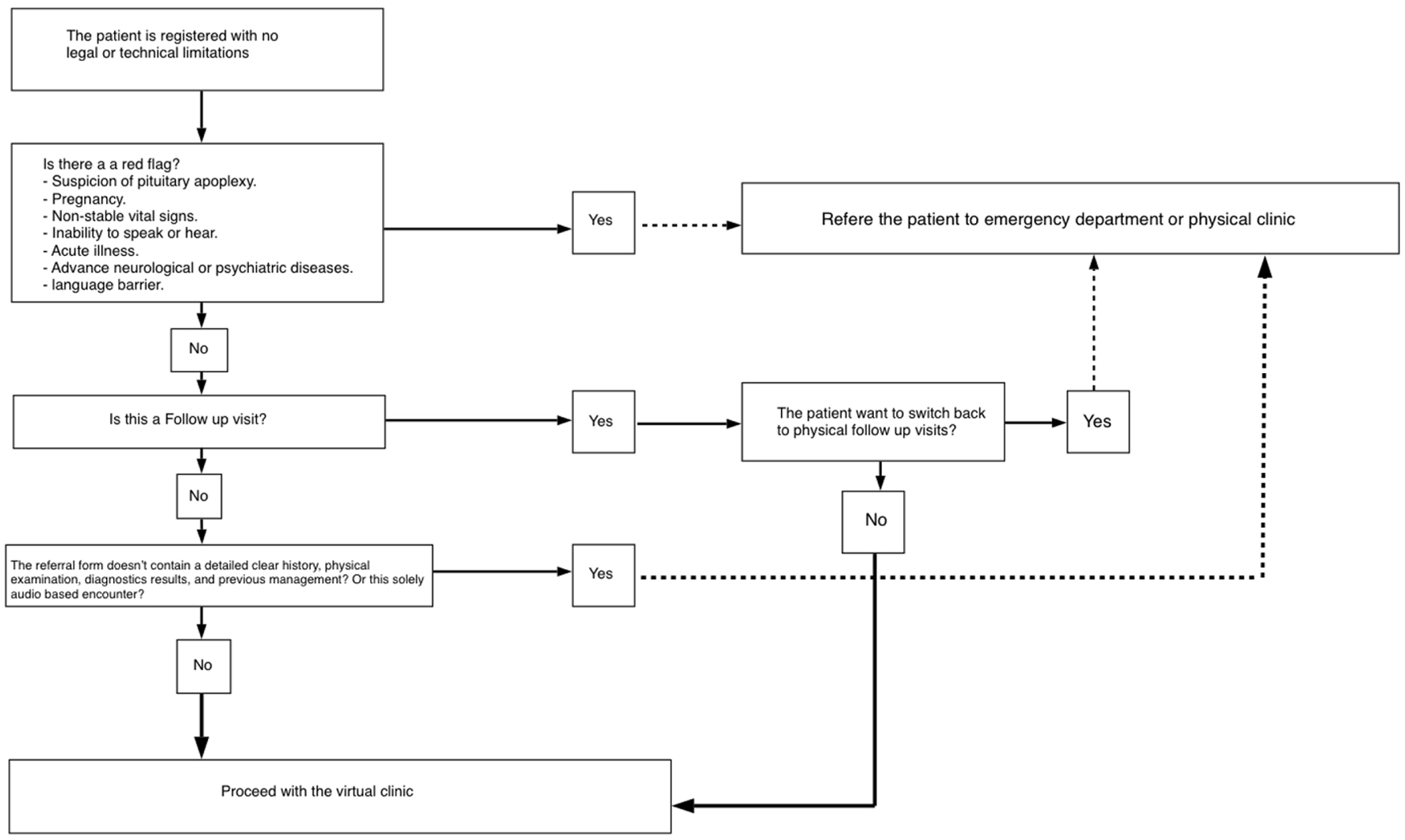| Before starting the encounter | Ensure the device has a stable power supply and internet access. Ensure the TM platform is ready. Review the patient’s file. Determine the format of the visit (audio only or video). Write down the most critical questions to ask the patient. |
| Starting the virtual encounter | Physician should introduce him/herself. Confirm the patient’s identity. Verify the quality of the connection. Look directly at the camera. Obtain informed consent. Ask the patient whether he/she wants anyone else to be present. Explain the reason for the encounter. Reassure the patient about the privacy of the encounter (the encounter is not being recorded). |
| Obtaining the history | Try to be systematic. Be concise. Use clear, simple words. Cover: 1) Symptoms suggestive of pituitary apoplexy; 2) Mass effect symptoms: visual impairment, headache altered level of consciousness, nausea, and vomiting; 3) Hypersecretion symptoms; 4) Hyposecretion symptoms. Complete the rest of the medical history (such as medications and allergies). |
| Physical examination | Examine mental status. Check vital signs (if the patient has the equipment or recent ones from a nearby medical facility) with orthostatic hypotension. Observe facial features of acromegaly or Cushing disease. Look for: 1) Peripheral signs of acromegaly; 2) Abdominal striae for Cushing disease; 3) Gynecomastia and nipple discharge. Optional use of assistance from the patient’s companion if he/she agrees. |
| Investigations | It may be helpful to share the screen and discuss the laboratory and imaging results with the patient. |
| Synchronous management | Physician with a patient: explanation of the management plan and education about investigations and medications, including dosage, frequency indication, and side effects. Physician with a physician: multidisciplinary meeting. Physicians with a patient: multidisciplinary meeting with the patient. |
| Asynchronous management | Patient with a physician: sending the lab results and images, such as new physical findings. Physician with a physician: medical report for expert consultation. |
| Closing the encounter | Order the lab results, imaging, medications, appointments, and needed referrals. Summarize the virtual encounter for the patient. Ensure the patient understands the plan. Ask if the patient has any further questions. Thank the patient and end the encounter. |
